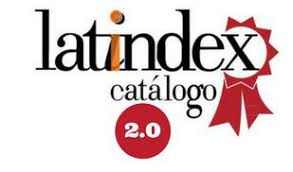Hipoclorito de Sodio y Ácido Hipocloroso: Capacidad de disolución de tejido orgánico (Estudioin-Vitro)
DOI:
https://doi.org/10.31984/oactiva.v1i2.128Palabras clave:
Antimicrobiana, temperatura, disolución, ácido hipoclorosoResumen
OBJETIVO: Comparar la capacidad de disolución de tejido orgánico de dos soluciones (NaOCl y HOCl), sometiéndolas a diferentes protocolos de tiempo y temperatura MATERIALES y MÉTODOS: Para el presente estudio se obtuvieron 120 muestras de tejido vacuno ex vivo, el cual fue dividido en 10 grupos de 12 muestras cada uno. Se utilizaron 4 soluciones de NaOCl con concentraciones de: 5.25%, 2.5%, 1% y 0.5% respectivamente y una solución de HOCl al 5%. Las muestras fueron observadas a distintos intervalos de tiempo: 1 minuto, 5 minutos, 15 minutos, 30 minutos, 45 minutos y 60 minutos. Así los datos recogidos de las observaciones se basaron en cambios macroscópicos presentes en la superficie de cada muestra y posteriormentefueronanalizadosestadísticamenteendiferentespruebas. RESULTADOS:Los datos fueron analizados con el programa informático Statistica 7.0. El análisis 1 comparó, en los distintos intervalos de tiempo, la capacidad de disolución de tejido orgánico entre las distintas concentraciones del NaOCl y el HOCl, a los 5 minutos y a los 15 minutos, no arrojaron diferencias significativas mientras que 30 a 60 minutos, sí permitieron observar diferencias significativas. En la segunda parte del análisis estadístico se comparó, en los distintos intervalos de tiempo, la valoración entre las dos temperaturas probadas 21oC y37 oC, los resultados obtenidos para los tiempos 1 minuto, 45 minutos y 60 minutos, no permiten observar diferencias significativas. Para los intervalos de 5 minutos, 15 minutos y 30 minutos, sí se observaron diferencias, siempre a favor de las muestras tratadas a 37oC.
Descargas
Citas
2 Espinel Pinzón et al. Remoción de Enterococcus faecalis despues de preparacion rotatoria e irrigacion con hipoclorito de sodio al 592% y gluconato de clorhexidina al 2% con/sin EDTA al 1.7%. Univ. Odontol. 2009 Ene – Jun; 28(60): 3943
3 Zahed M. et al. Residual antibacterial activity of a new modified sodium hypochlorite – based endodontic irrigation solution. Med. Oral Patol. Oral Cir. Bucal. 2011 Jul 1;16(4):e588-92
4 Alves F. et al. Time – depend antibacterial effects of the solf – adjusting file used with two sodium hypochlorite concentration. JOE. 2011 October;37(10): 1451-1455
5 Zmener O. Estado actual del hipoclorito de sodio en endodoncia.1.Propiedadesbiológicas.RAOA2010Julio;98(3): 247-255
6 Zmener O. Estado actual del hipoclorito de sodio en endodoncia. 2. Propiedades fisicoquímicas. RAOA 2010 Septiembre; 98(4): 351-357
7 Gergi R, Osta N, Bourbouze G, Zgheib C, Arbab-Chirani R, Naaman A. Effects of three nickel titanium instrument systems on root canal geometry assessed by micro-computed tomography. International Endodontic Journal, 48, 162–170, 2015.
8 Pathak S. In vitro comparison of K-file, Mtwo, and Wave One in cleaning efficacy and instrumentation time in primary molars. Chrismed J Health Res 2016;3:60-4.
9 Nahid Ramazani, Abbas Mohammadi, Foroogh Amirabadi, Mohsen Ramazani, Farzane Ehsani. In vitro investigation of the cleaning efficacy, shaping ability, preparation time and file deformation of continuous rotary, reciprocating rotary and manual instrumentations in primary molars Journal of Dental Research, Dental Clinics, Dental Prospects J Dent Reserch 2016;10(1): 49-56
10 Santos Coelho M, Fontana C, Shoji Kato A, Sigrist de Martin A, Silveira Bueno C. Effects of Glide Path on the Centering Ability and Preparation Time of Two Reciprocating Instruments Iranian Endodontic Journal 2016;11(1): 33-37
11 Balandrano Pinal F. Soluciones para irrigación en endodoncia: hipoclorito de sodio y gluconato de clorhexidina. CCDCR. 2007 Abril; 3(1): 11-14
12 Guida A. Mechanism of action of sodium hyplochlorite and its effects on dentin. Minerva Stomatologica. 2006; 55(9): 471-482
13 Lahoud Salem V. Irrigación endodóntica con el uso de hipoclorito de sodio. Odontol. Sanmarquina 2006; 9(1): 2830
14 Takeda F. A comparative study of the removal of smear layer by three endodontic irrigants and two types of laser. International Endodontic Journal 1999; 32: 32-39
15 Schilder H. Cleanning and shaping the root canal. Dent Clin North Am 1974;18(2):269-296
16 Cohen, B. Las vías de la pulpa. 7ma. edición. Editorial Harcourt 1999. España
17 Rodríguez-Ponce, A. Endodoncia Consideraciones Actuales. 1ra. Edición. Edit. Actualidades Medico Odontológicas Latinoamericanas C.A. 2003
18 Piskin B. Stability of various sodium hypochlotite solutions. JOE 1995 Mayo; 21(5): 253-255
19 BystromA.The antibacterial action of sodium hypochlorite and EDTA un 60 cases of endodontic therapy. International Endodontic Journal 1985;
15: 35-40 20 Sirtes G. The effects of temperature on sodium hypochlorite short – term stability, pulp dissolution capacity, and antimicrobial efficacy. Journal of Endodontics 2005 September;31 (9): 669-671
21 Gordon T. Solvent effect of various dilutions of sodium hypochlorite on vital and necrotic tissue. Journal of endodontics 1981 October; 7(10): 466-469
22 Trepagnier C. Quantitative study of sodium hypochlorite as an in vivo endodontic irrigant. Journal of endodontics 1977 May; 3(5): 194-196
23 Hyeon – Sik K. Chemical interaction of alexidine ando sodium hypochlorite. Journal of endodontics January 2012; 38(1):112-116
24 Zehnder M. Root canal irrigants. J Endod 2006;32:389-398
25 Basrani Br et al. Interaction between sodium hypochlorite and clorhexidine gluconate. J Endod 2007; 8: 966-9 26 Bui T et al. Evaluation of the interaction between sodium hypochlorite abd chlorexidine gluconate and its effect on root dentin. J Endod 2008; 34:181-5
27 Dakin HD. On the use of certain antiseptic substances in treatment of infected wounds. BMJ 1915;2:318-20
28 Grossman, L. Irrigation of root canals. J. Amer. Dent. Ass. 30(23): 1915-1917, Dec. 1943
29 Levine, Jeffrey M. Dakin’s Solution: Past, Present, and Future. Advances in SkinWound Care 2013;26(9):410–414 30 Grossman L, Meimann B. Solution of pulp tissue by chemical agents. J. Amer. Dent. Ass., 28(2):223-225, Feb. 1941
31 Walker, A. A definite and dependable therapy for pulpless teeth. J. Amer. Dent. Ass, 23(8): 1418-1425, Aug. 1936
32 American Association of Endodontics. Contemporary terminology for Endodontics. 6th. Ed. Chcago 1998
33 Grossman, L. Irrigation of root canals. J. Amer. Dent. Ass. 30(23): 1915-1917, Dec. 1943
34 Estrela C. et al. Mechanism of action of sodium hypochlorite. Braz. Dent. J. 2002;13:113-117
35 Spano JC. Solvent action of sodium hypochlorite on bovine pulp and physic – chemical properties of resulting liquid. Braz Dent J 2001; 12(3):154-157
36 Cunninghan W. Effect of temperature on the bacterial action of sodium hypochlorite endodontic irrigant. Oral Surg1980; 50:569
37 Pontes H. Gingival and obone necrosis caused by accidental sodium hypochlorite injection instead of anaesthetic solution. Int. End. J 2008; 41: 267-270
38 Brandt M. Toxicity of concentrated sodium hypochlorite used as an endodontic irrigant. Int. Endod J April 2004; 37:272-280
39 Gambarini G. Chemical stability of heated sodium hypochlorite endodontic irrigants. Journal of endodontics 1998 June; 24 (6): 432-434
40 Slutzky–Goldberg I. The effect of dentin on the pulp tissue dissolution capacity of sodium hypochlorite and calcium hydroxide. Journal of endodontics August 2013; 39(8): 980983
41 Suriani Abdul Rani, Russell Hoon, Ramin Najafi, Behzad Khosrovi, Lu Wang, Dmitri Debabov. The In Vitro Antimicrobial Activity of Wound and Skin Cleansers at Nontoxic Concentrations. Advances in skin and wound care 2014; Feb 65-69
42 Silvia Odorcic, Wolfgang Haas, Michael Gilmore, Claes Dohlman. Fungal Infections After Boston Type 1 Keratoprosthesis Implantation: Literature Review and In Vitro Antifungal Activity of Hypochlorous Acid. Cornea Journal 2015; 34(12): 1599-1605
4´3 Guoshun Wang, William Nauseef. Salt, chloride, bleach and innate host defense. Journal of Leukocyte Biology 2015;98:1-10
Publicado
- Resumen 1148
- PDF 1901
- HTML 381
Cómo citar
Número
Sección
Licencia
Derechos de autor 2016 Odontología Activa Revista Científica

Esta obra está bajo una licencia internacional Creative Commons Atribución-NoComercial-CompartirIgual 4.0.
Se autoriza la reproducción total y parcial, y la citación del material que aparece en la revista, siempre y cuando se indique de manera explícita: nombre de la revista, nombre del autor(es), año, volumen, número y páginas del artículo fuente. Las ideas y afirmaciones consignadas por los autores están bajo su responsabilidad y no interpretan necesariamente las opiniones y políticas del Consejo Editorial de la Revista OActiva ni de la Universidad Católica de Cuenca.
La Revista OActiva utiliza la Licencia Creative Commons de Reconocimeinto-NoComercial-CompartirIgual 4.0, que es la siguiente: CC BY-NC-SA 4.0 Internacional.











